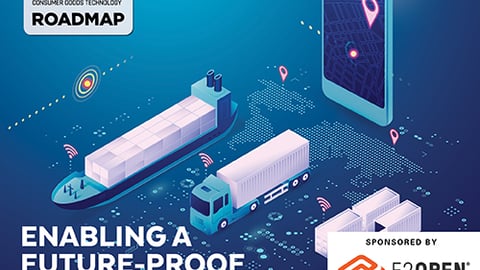Empowering CGs to Focus on Supply Chain Opportunities
Historically, the supply chain has always been a complex business function because of all the moving parts, organizations involved and challenges that come from working in silos, among other challenges. However, the pandemic has brought this to light even more so as consumer goods companies felt the first-hand pressures on every aspect of their supply chains.
While some CGs may have struggled through the disruption, others used it as an opportunity to fast-track their digital transformation implementations and built a flexible and more agile supply chain to withstand any future disruptions. Here, CGT tapped into the expertise of Lori Harner, senior director of product marketing for E2open, to get her perspective on how CGs can become more empowered to focus on the supply chain opportunities moving forward.
CGT: What lessons from the pandemic make it crucial that consumer goods companies build more flexibility and resilience into their supply chains?
To no one's surprise, the pandemic has made supply chains even harder to run. The new normal is markedly different than the pre-pandemic status quo, making it harder to accurately align demand and supply across your entire supply chain while maintaining customer satisfaction and loyalty.
The time to act is now. Being prepared means making investments today to get ahead of the next significant disruption. This positions companies to become more resilient, reduce risk and better equip themselves to capture unexpected opportunities.
A new way of thinking. Now more than ever, it is vital to have visibility and control across your entire supply chain, including internal functions and outside the four walls of the business. The most optimal way to achieve this is with an extensive trading partner network. Leveraging a cloud-based network that connects all trading partners across all tiers and ecosystems enables you to exchange information and work collaboratively and securely with all partners in real-time. A network empowers organizations across the entire supply chain to focus on the larger picture of end-to-end opportunities, risks and inefficiencies that they and their trading partners tackle together.
AI is a game-changer. Purpose-built artificial intelligence combined with real-time data is the only way to get the performance advantage required to deal with significant disruptions — even large and unprecedented ones. Real-time data from downstream sources like retailer point of sale, what’s on the shelf and retailer distribution centers offer valuable signals to predict demand. Likewise, real-time data from upstream partners such as co-packers and contract manufacturers are essential to gain visibility to supply. Processing all of this data in a timely fashion is overwhelming without AI. However, consumer goods companies should be selective when evaluating AI. It must be field-proven at scale to avoid putting mission-critical supply chains at risk.
Sometimes the best defense is a strong offense. The combination of AI technology, applications and real-time data on one operating platform is critical for enabling agility, efficiency and resiliency — both in the next normal and when managing day-to-day disruptions.
CGT: What tend to be the most significant obstacles consumer goods companies face in responding to demand and supply fluctuations using their current supply chain infrastructure?
More and more, consumer goods companies are outsourcing business areas to help reduce costs and gain economies of scale. They now depend on a global network of suppliers, co-packers, logistics providers, distributors, retailers and other partners to design, assemble, ship, sell and repair their products. This outsourced business model greatly reduces visibility and control over the supply chain, creating extra risks and costs, despite all its benefits. This is incredibly challenging because supply chain business processes are more interdependent and time-sensitive than ever before. To regain visibility and control, it is crucial to gather data from all your downstream and upstream partners — no matter what tier or ecosystem they're in — and be able to send updates and directives to them in real-time.
CGT: What foundational elements are a must to support a more flexible and resilient supply chain?
The level of agility required to capture growth opportunities — plus resiliency to manage today's risks — demands a new way of thinking. Consumer goods companies should look for one operating platform that brings together all the data needed to see what's happening, combined with all the applications, artificial intelligence (AI) and analytics necessary to understand what disruptions mean to the business, recommend the best course of action, put decisions into effect and then learn for next time, all powered by an extensive trading partner network.
CGT: Why is a trading partner network a key enabler of a resilient consumer goods supply chain?
A trading partner network, particularly one that is cloud-based and that covers all tiers and ecosystems, enables you to exchange information and work collaboratively and securely with all downstream and upstream partners in real-time. The network empowers consumer goods companies to focus on the larger picture of end-to-end opportunities, risks and inefficiencies that they and their trading partners tackle together. With real-time connectivity to a robust operating platform, the network provides decision-grade data to fuel all the applications, AI and analytics necessary to achieve digital transformation.






